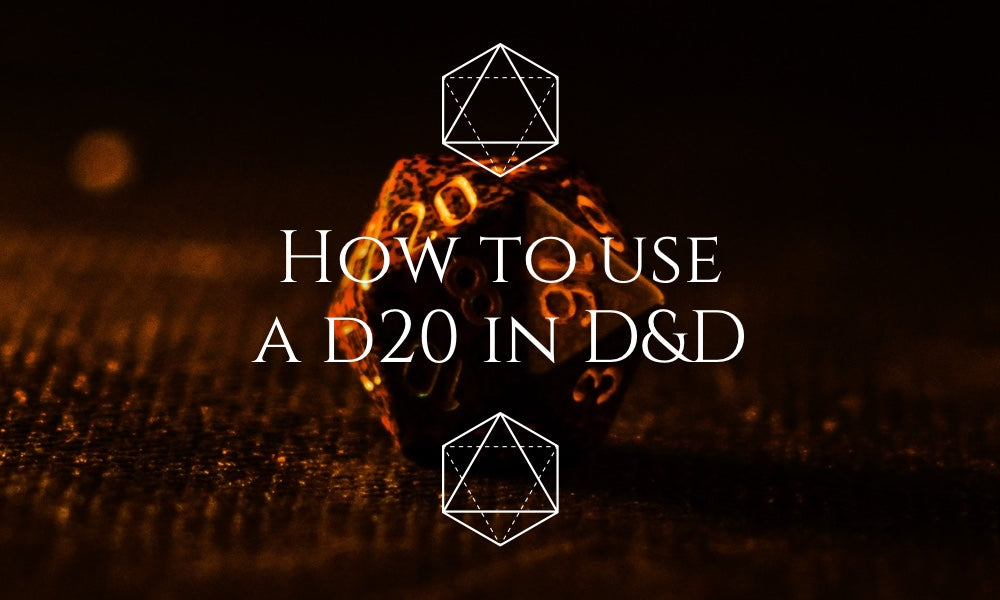Greetings, intrepid explorer! If you're embarking on the exciting, often unpredictable journey of Dungeons & Dragons, you've probably found yourself puzzling over the whimsical icosahedron known as the d20. In the thrilling world of D&D, this 20-sided die takes center stage, steering the fate of heroes and villains alike.
So, sit back and fasten your seatbelts as we dive deep into the world of d20 rolls, turning your gaming experience from a frazzled "What on Earth...?" to a confident "Roll for initiative, friends!"
Chapter 1: The d20 System - Not a New Solar System, I Promise
Dungeons & Dragons, particularly in its 3rd, 4th, and 5th editions, is often described as a "d20 system". No, it's not the latest discovery by NASA. It's the cornerstone of D&D's game mechanics.
Chapter 2: The Three Pillars of d20 Rolls: Ability Checks, Saving Throws, and Attack Rolls
In D&D, the d20 is primarily used for three types of rolls: Ability Checks, Saving Throws, and Attack Rolls. These are the holy trinity of action in the D&D universe.
Chapter 3: Critical Success and Failure: The Peaks and Troughs of Adventure
A "natural" roll (before adding any modifiers) of 20 on a d20 is called a "critical success" or "crit." On the flip side, a roll of 1 is a "critical failure" or a "fumble." These moments can be some of the most memorable in D&D, leading to triumphant victories, hilarious missteps, and everything in between.
Chapter 4: Advantage and Disadvantage: The Twists of Fate
Sometimes, your character will find themselves in situations that are particularly advantageous or disadvantageous. This is where the d20 really comes into its own. In situations of advantage, you'll roll two d20s and take the higher result. In situations of disadvantage, you'll roll two d20s and take the lower result. This mechanic adds another layer of unpredictability and excitement to the game.
Chapter 5: Determining Damage: Not with a d20!
After you've successfully hit your target with an attack roll, it's time to roll for damage. But here's where the d20 steps aside and lets its smaller, less symmetrical cousins take over. The type of dice you roll for damage depends on the weapon or spell you're using. For instance, a longsword uses a d8, a dagger uses a d4, and the spell 'fireball' requires a handful of d6s. These rolls, plus any relevant modifiers, determine how much you've wounded your opponent or how spectacularly you've shattered that pesky locked door.
Chapter 6: Roleplay Rolls: The Heart of D&D
D&D isn't just a combat simulator. It's a role-playing game, and the d20 is an integral part of this aspect. You'll use it to navigate social encounters, overcome environmental challenges, and recall important pieces of lore, among other things. These roleplay rolls are often the ones that lead to the most memorable moments in a D&D campaign.
Chapter 7: House Rules: Spicing Things Up
Many D&D tables incorporate "house rules," which are unique modifications to the game's rules. One notable possible inclusion is that of additional effects from critical successes (rolling a 20 on a d20) and critical failures (rolling a 1 on a d20). DMs will often have the player roll a percentile die and then reference a tables called Critical Hit Tables and Critical Fumble Tables respectively to determine the additional effects.
Our journey through the realms of the d20 comes to an end, dear adventurer. But remember, this die is not your destiny. It's a tool, a spark to ignite the unpredictable fireworks of your D&D game. Your character's fate is in your hands, influenced by your choices, your strategy, and yes, the occasional lucky or unlucky roll. So, gather your party, ready your dice, and roll on! Happy gaming!

